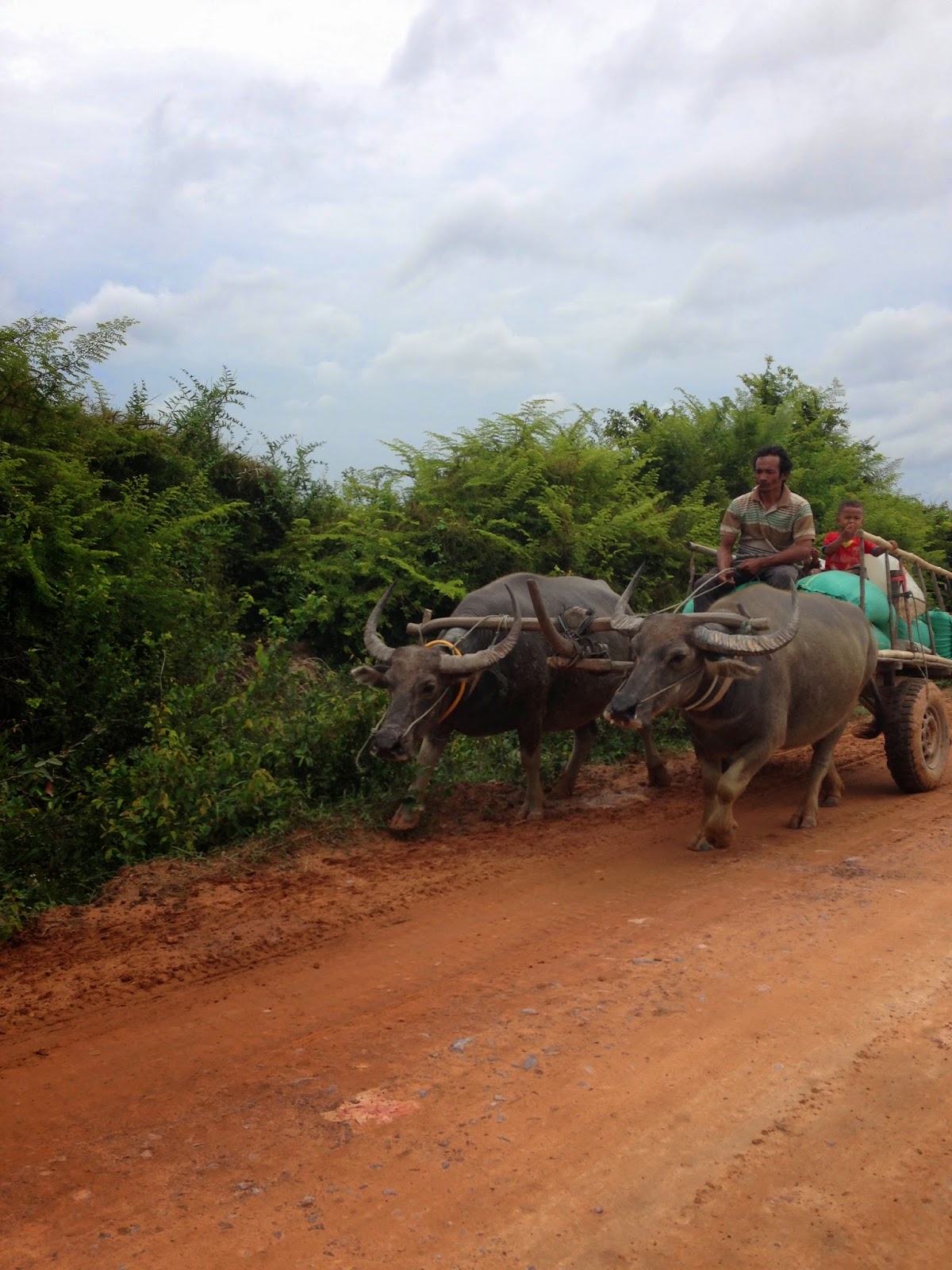We got in late Saturday night, so we went right to our airbnb studio. We were staying in an in-law suite at a house owned by a Frenchman who had moved to Siem Reap 10 years ago and had married a local lady. Cambodia was a French colony from around 1887 to 1953, and apparently the French ties are still quite strong! That couple lives along with the wife's siblings, partners, and kids, so it's a big, happy household. However, after asking about the wife's parents, we discovered they had died at the age of 63, simply because they didn't have adequate healthcare. Note this was a long time after the Khmer Rouge was in power, but the societal impacts were still profound.
On Sunday, we hired a tuk tuk driver, who was actually the wife's brother (a real family business!), and we drove out to the great Tonle Sap Lake, south of Siem Reap. This lake is really extraordinary. Most of the time it is very small and shallow, draining into the Siem River which flows into the Mekong River, then eventually into the South China Sea. However, in the rainy season, there is such a large increase in the volume of the Mekong River, that much of the water gets backed up into the Tonle Sap lake, increasing its size from 2,700 km^2 to 16,000 km^2! This huge flood plain is a great breeding ground for fish, so lots of Cambodian people have built villages on or around the Tonle Sap lake, to capitalize on the fishing opportunities. So, we drove to the lake then took a boat tour of one of the towns. It felt a bit weird, as we were just staring at the locals while they went on with their lives, but I'm glad we got to see them and learn about how they lived.
To protect themselves from the constant flooding, most homes are built up on stilts, or pillars. It reminded me of our grandparents' beach house in North Carolina, which is also built on stilts in case of hurricanes. But the construction on these homes was a bit less up to code.
We saw kids playing everywhere. Made me think about what kind of life these kids have here. They don't have much space to run around and play kid games, but I'm sure they have just as much fun playing water games.
Other than tourism, every bit of work we saw people doing here was related in one way or another to the fishing industry. They were building boats, repainting them, fixing nets, actually fishing, etc. Some homes had small gardens under the houses, but those gardens will be covered in water in another month. Better time that harvest well!
These houses were built on a floating bamboo framework, so the houses would rise and fall with the water level.
This was a "floating forest," meaning the water level had risen high enough to cover the forest floor, which is exposed all during the dry season.
We could have paid $5 extra dollars to get a canoe ride from some of the women of the village, but we opted out.
On the ride back into town, we passed several carts being pulled by beasts of burden. This wasn't normal within the city, but out here it seemed very common. These are water buffalo! They are incredibly stout and barrel like, especially compared to the cows in the next picture. Notice how red the dirt is! It was that color everywhere. I imagine in the dry season, it would make quite persistent dust.
We saw these bony cows everywhere. Most were grazing, eventually sold for beef, but a few were used to plow fields or pull carts. This guy is riding in a boat :)
We also stopped at a local market looking for fruit. We saw this, which turns out to fire ant larva. They put it in soups. Bleh.
Fried insects anyone?
We also stopped at Angkor Artisans, which is an organization that accepts disabled or extremely poor citizens and teaches them an artistic skill. They then sell the finished products to tourists. They had several different workshops on site that we could tour through. They made paintings, silk screens, wood carvings, metal work, all sorts of things.
The beginning of a Buddha!
That night we went to the famous Pub Street in the heart of Siem Reap. It's exactly what is sounds like, a nightlife area filled with bars and restaurants, mostly in place for the temple tourists.
We went to Pub Street to visit the Temple Balcony, a restaurant that has a free Apsara show every evening. Apsaras are celestial nymphs that are found carved into almost every temple in Siem Reap. They are supposed to be present in Hindu heaven and are the ideal beautiful woman. So to imitate them in reality, Cambodian culture created Apsara dances, where the dancers wear the same ornate costumes as seem on the carvings in the temples. Originally Apsara dances were only for the entertainment of royalty. However, when the Khmer Rouge took power, they essentially wiped out anyone who knew or performed the dances. Nowadays, they are trying to reinstate the dancing culture, but they need the support of tourists to do so, so you can see the Apsara dances all around town. It was a good feeling to see parts of Cambodian culture being restored after the atrocity of the Khmer Rouge. You can tell a good Apsara dancer by how flexible her fingers are. The best ones can bend their fingers backward a shocking amount, creating graceful curves that are hard for the average person to replicate.
This was the dance of the peacock!























No comments:
Post a Comment